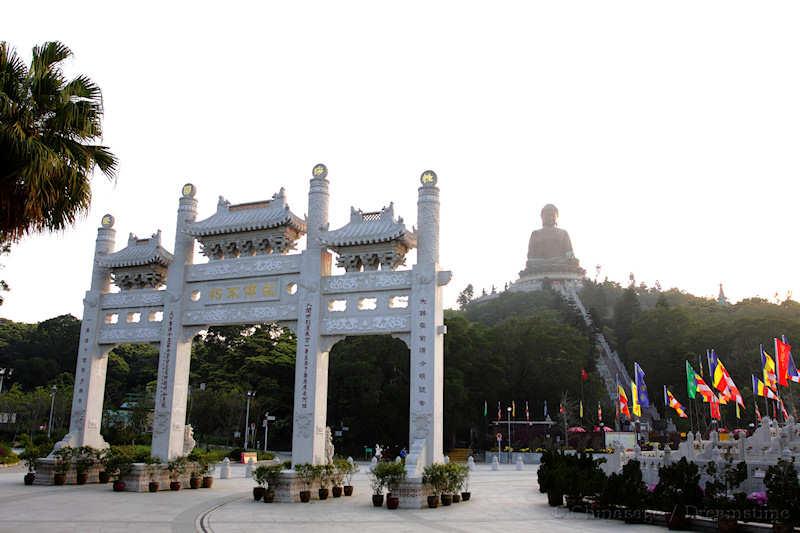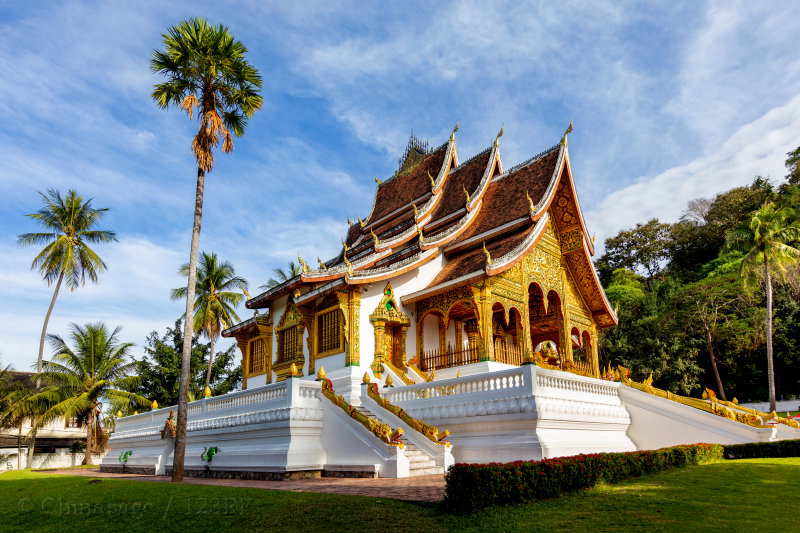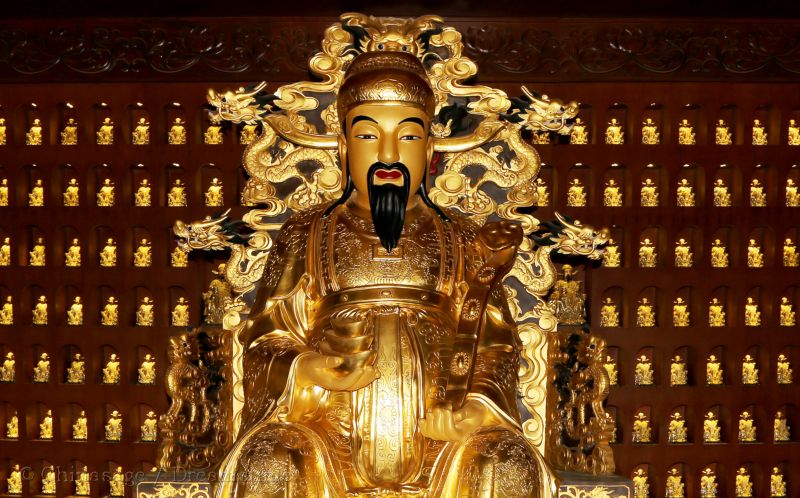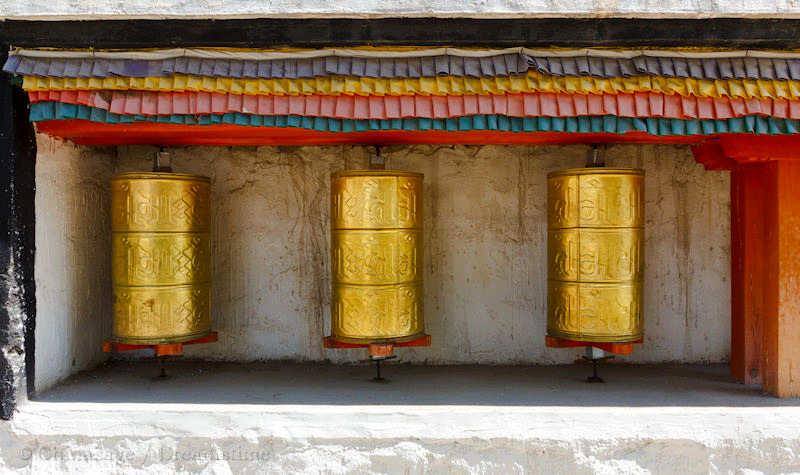Buddhism in China

Buddhism has had a profound effect on China ever since it made its way from northern India into China during the Han dynasty. The Buddhist religion was founded in Southern Nepal in the 5th century BCE and has developed into two main strands ‘Theravada’ and ‘Mahayana’. Theravada (Doctrine of Elders) has its stronghold in Sri Lanka, Thailand and Burma. The Mahayana (Great Wheel) strand, developed in the 1st century BCE and teaches the gradual accumulation of merit through good acts leading eventually to life free from suffering in Paradise. Enlightened Bodhisattvas remain in the world to help others reach enlightenment or nirvana ➚. Mahayana is the school of Buddhism adopted in Japan, Mongolia, Vietnam, Korea, Tibet and elsewhere in China. In addition there is the Tibetan Tantric ➚ strand of Buddhism which is strong in Tibet, Qinghai, Gansu, Sichuan and Inner Mongolia.

Siddhartha Gautama
The founder of Buddhism, Siddhartha Gautama ➚ was born as the son of an Indian nobleman in 623BCE. He lived a pampered childhood, never venturing outside the family's palace in Nepal. When at the age of 29 he saw the suffering of people in the outside world he determined to renounce all worldly pleasures. After traveling widely to seek a cure to suffering, he achieved enlightenment under a banyan tree. He concluded that suffering was caused by craving for the unattainable, and so the removal of desires is the key to peace and contentment. The best known belief is that the spirit is immortal and that all creatures are re-incarnated after death, the kind of creature you become will depend on the virtuousness of the previous life. This led to strict vegetarianism, as otherwise you may end up eating your relatives! The strong belief in re-incarnation led to a weaker hold on the sanctity of life. Suicide, never a crime in China, would lead, if done for the right reasons might actually be rewarded by a happier re-incarnation in the next life. Similarly if a family is close to death from starvation then infanticide could be justified on the grounds that the child would most likely have a better life when they are reborn.
Eight steps to Enlightenment
The belief in reincarnation is not in the original teachings of Gautama, his teachings dealt with improving the human condition and made little mention of God, asceticism or the after-life. Nor did Gautama propose all Buddhists to be monks or wear Buddhist clothing, his was a more pragmatic and practical vision. He offered four noble truths: 1) Suffering and sorrow are part of the human condition; 2) It is greed and craving that cause sorrow; 3) Abandoning earthly craving will remove suffering; 4) Learning to abandon 'self'. The path to enlightenment is an eightfold path: 1) true understanding; 2) true thought; 3) careful speech; 4) correct action; 5) working for good; 6) keeping out evil; 7) acting sensitively; 8) meditating to achieve calm and rest. His teaching to modern ears is more like a course in positive thinking or psychic healing.
The story of the journey taken by Buddhist scriptures into China began with Fa Xian ➚ in the early fifth century and later in the famous tale of Xuanzang with the ‘Journey to the West ➚’. Buddhism initially gained popularity among the north-western tribes in the 3rd century CE; during the Period of Disunity it was adopted as the imperial religion by the northern emperors of China. Choosing Buddhism distanced the emperors from their Confucian advisers. To promote wider acceptance in China, Chinese Buddhists allowed for a family life rather than insisting on monkish celibacy and also permitted the veneration of ancestors. The Buddhist concept of Karma ➚ (bad luck caused by bad deeds) was well received in China. As Buddhists are allowed to worship other gods it was still acceptable to practice Buddhism and at the same time take part in Daoist festivals. The non-exclusive nature of Buddhism proved attractive to the Chinese.

China's adoption
In China, Buddhism reached its zenith during the Tang dynasty. The study of Buddhist scripts and the printing of Buddhist texts brought literacy to many people. Monks provided charitable services to the people and never really threatened the state. Ten schools of Buddhism emerged of which only two have remained influential: Chan ➚ (Zen or Meditation) and Amitabha ➚ (Pure Land). Many Buddhist shrines and statues are dedicated to Guanyin ➚, the Goddess of Mercy. She sympathetically listens to the requests of supplicants at her temples. Another common Buddhist image is of Budai 布袋 known as the ‘Laughing Buddha’ a fat figure representing the Future Buddha or Miluo Fo ➚ the god of happiness and contentment.
The Japanese religion Shintoism ➚ shows quite a few similarities to Buddhism, it too is grounded in contemplation and relationship with nature.
Decline in China
By the time of the Tang dynasty, a good proportion of the national wealth and land had been gifted to the Buddhist temples over the centuries - a similar situation to the accumulation of wealth by Christian churches and monasteries in medieval Europe. As Buddhist monasteries carried out charitable work (helping the poor, hospitals, planting trees), they were exempt from tax. Crafty landowners would therefore give their land to the monastery in return for being maintained as tenants, thus avoiding tax. Emperor Wuzong brought this to an abrupt end in 845 when he chose Daoism as the official religion. Huge accumulations of Buddhist land and treasures were confiscated and monks were sent back to their families. Buddhism never again regained its place as the state religion of China. Later on in the 19th century Buddhism was suppressed during the Taiping Rebellion and again in the 20th century under the Cultural Revolution.
Important Buddhist sites in China include Dunhuang, Longmen Caves and Yungang Caves. These sites have many thousands of carved images of Buddha and his entourage. Buddhist monasteries are scattered throughout China, offering refuge and support for people in hard times.

Xuanzang 玄奘 [602 - 664] or Hsüan-tsang WG
Xuanzang is remembered as the monk who brought the Buddhist scriptures into China. He was born near the then capital of Luoyang and was initially a follower of Confucius before converting to Buddhism at the age of 13 and becoming a monk. At the age of 27 he set off on his epic trek to study the Sanskrit ➚ Buddhist texts in India. He had been refused permission to go by the Chinese authorities but went anyway. Xuanzang's outward journey took him on the Silk Route via the Tarim basin (visiting Gaochang; Kuqa and Ha Noi near Kashgar) to Central Asia and then south into India. There he studied and traveled extensively for fifteen years. His return trip took him along the southern branch of the Silk Route back into China.

Journey to the West
Xuanzang brought back to Emperor Taizong not only scriptures but an in depth knowledge of India, he was fêted by the Imperial court who by then favored Buddhism. He was given personal audiences with the Emperor and worked at the Temple of Goodwill ➚ translating the scriptures. The Great Goose Pagoda, Xi'an was built to house the scriptures and keep them safe from fire. It still stands today. The name of the pagoda honors the story of how Buddha, as a strict vegetarian, overcame the temptation to eat a wild goose. Xuanzang and a group of scholars, including some Indians, translated a huge volume of text - at least 25 times the length of the Bible. He wrote a detailed account of his trip ‘The Record of Travels in the Western Countries ➚’ which was much read and sparked interest in foreign cultures. Some of his translations have been found in the caves at Dunhuang. He died in 664CE and was given a lavish state funeral, his remains were deposited at the Xingjiao temple in Chang'an - although the Linggu Pagoda near Nanjing also lays claim to house his remains.
It was Wu Cheng'en ➚'s book ‘The Journey to the West’ 西游记 Xī yóu jì or ‘Monkey’, written c. 1580CE, that popularized the monk's journey to India. This famous book spawned many other stories about the antics of the monk and his strange attendants (including the Monkey King) which are still very popular all over China.
